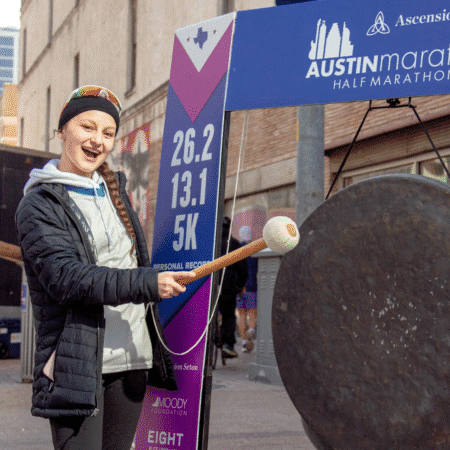How to Set Your Marathon Goals for Next Year
 The end of one marathon season is the perfect time to start dreaming about the next. Whether you crushed your last race or you’re just getting started, setting clear goals can help make your next Austin Marathon training cycle more focused, rewarding, and fun.
The end of one marathon season is the perfect time to start dreaming about the next. Whether you crushed your last race or you’re just getting started, setting clear goals can help make your next Austin Marathon training cycle more focused, rewarding, and fun.
Let’s break down how to set meaningful, achievable marathon goals — and actually stick to them.
1. Reflect on the Past Before You Plan Ahead
Before you jump into what’s next, take a moment to look back. Ask yourself:
- What went well in your last training cycle or race?
- What challenges did you face — and how did you deal with them?
- What did you enjoy most about the process?
Understanding your past experience can help shape better, more personalized goals for your next journey to the Austin Marathon finish line.
2. Set SMART Running Goals
You’ve probably heard this acronym before, but it works especially well for marathoners. Make your goals:
- Specific: Instead of “run faster,” try “run a sub-4:00 marathon.”
- Measurable: Track miles, paces, cross-training days, or race times.
- Achievable: Be honest about your current fitness level.
- Relevant: Focus on what matters most to you — not just what others are doing.
- Time-bound: Give your goals a deadline (hello, February race day!).
Example: “By February, I want to finish the Austin Marathon in under 4:15, following a 4-day-a-week training plan and hitting all my long runs.”
3. Choose Goals That Go Beyond the Clock
Not every goal has to be time-based. Consider goals that focus on:
- Consistency: Complete 90% of your scheduled runs.
- Health: Prioritize recovery, sleep, and injury prevention.
- Community: Join a local running group or train with friends.
- Mindset: Build confidence and stay mentally strong through training highs and lows.
These types of goals often lead to better performance — and a more enjoyable experience.
4. Build in Flexibility
Marathon training is a long road. Life happens. Weather changes. Injuries can pop up. So while your goals should be specific, your plan needs to be adaptable.
Set primary goals (your A-goal) and secondary goals (B- or C-goals). That way, even if things don’t go exactly as planned, you still have something meaningful to aim for.Putting your goals in writing makes them real. Better yet, share them with a friend, training partner, or your favorite Austin Marathon Instagram caption. Accountability and community support go a long way.
Consider keeping a training journal or using an app to log your progress. Tracking the journey makes it easier to stay motivated — and celebrate how far you’ve come.

Final Thoughts
Setting marathon goals isn’t just about what you want to achieve — it’s about why you run and how you want to grow. Whether your sights are set on a PR, a new distance, or just making it to the starting line healthy and happy, your goals should reflect your own personal journey.
The Austin Marathon is the perfect stage for whatever goal you choose. So go ahead — dream big, plan smart, and get ready to make next year your best race yet.






